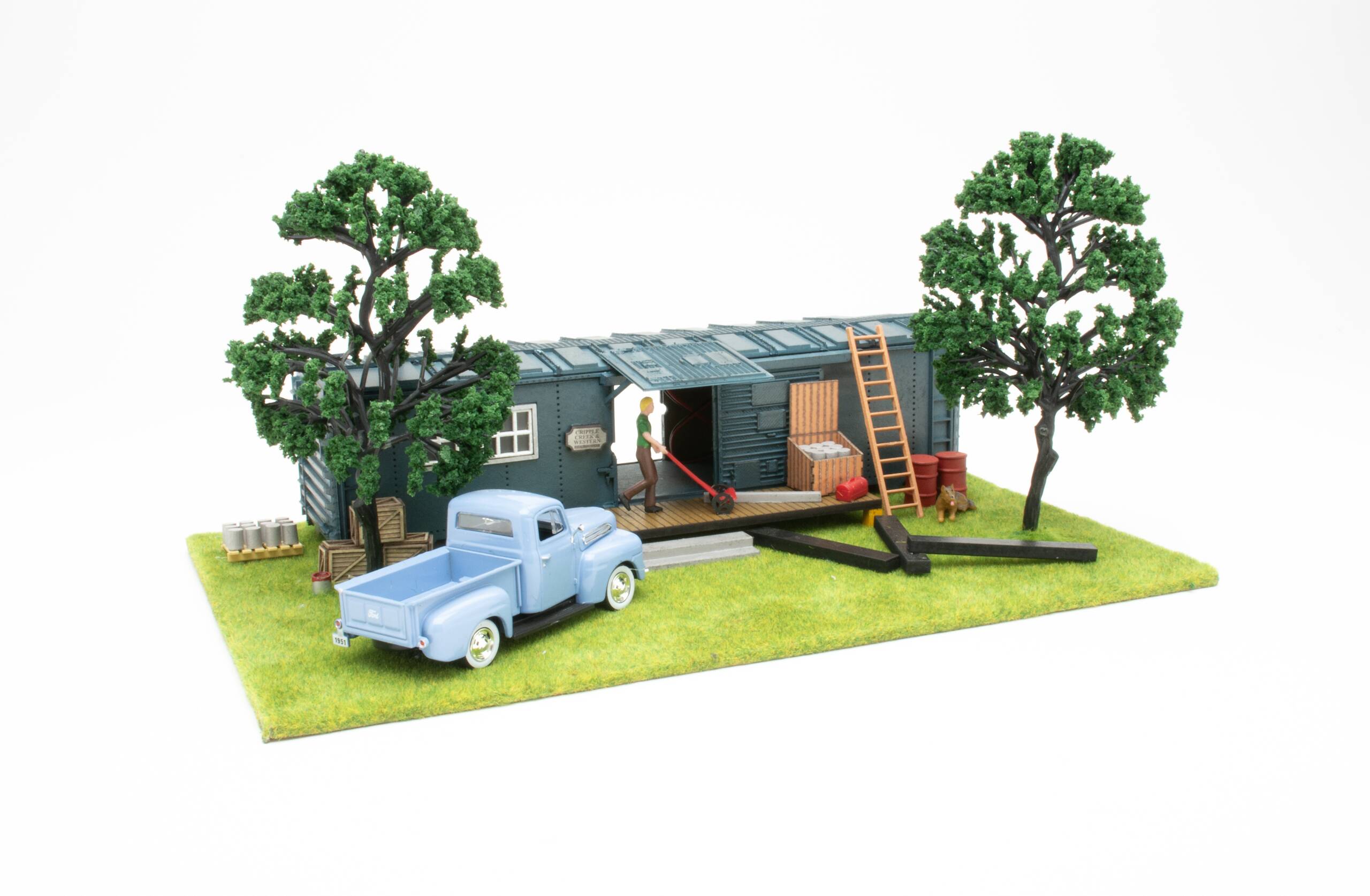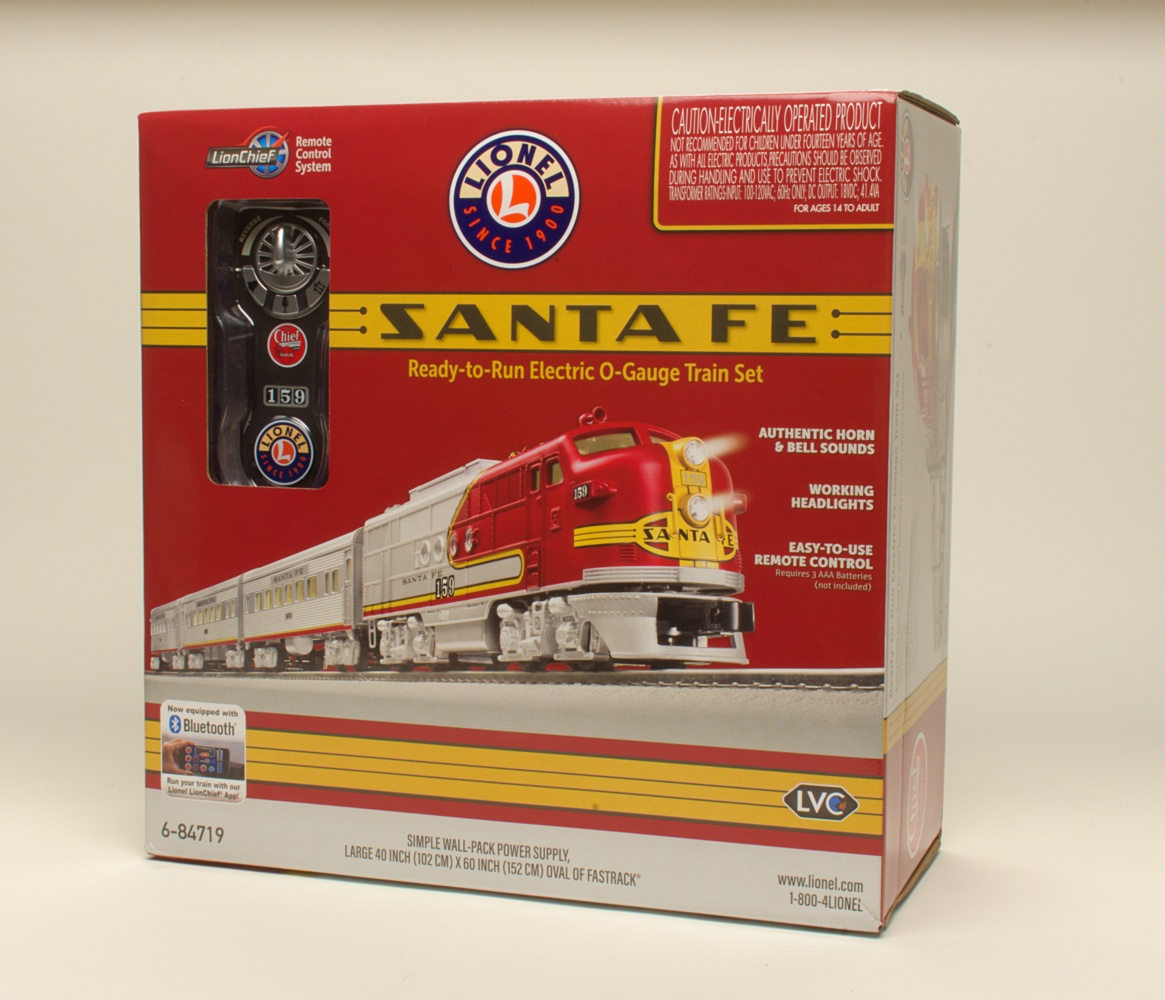
Introducing the Lionel Super Chief LionChief set
The Lionel Super Chief LionChief toy train set is a good-looking small passenger train set in a road name I really like. Lionel’s no. 84719 Santa Fe Super Chief LionChief set has been in the catalog since 2018, and there are good reasons the train maker keeps offering it.
We needed some passenger cars to run on our O gauge City Terminal & Transfer layout, so the outfit ticked several boxes for us. Since the set isn’t exactly new, I offer this less as a review and more as a report on the state of the art of entry-level toy trains.
My expectations for the Santa Fe Super Chief LionChief set were tempered a little since it’s a starter set. The last one of those I bought was in the early 1990s. While it was okay for the time, it was no great shakes.
This, however, is something completely different.
What’s in the Lionel Super Chief box?

Opening the carton and unboxing the contents elicited a number of “wows!” as I discovered some unexpected and nice features.
The first item I unpacked was the locomotive, a model of Electro-Motive Corp.’s FT diesel. It’s a well-done traditional-sized model that’s been produced a few times in recent years in various road names.
The unit’s iconic Warbonnet paint scheme is nicely applied and attractive. There’s plenty of heft to the model because it’s powered by two can-style motors.
What surprised me and got the first “wow!” was the size of the cars. These aren’t the postwar-size short ones. While not scale, they certainly are bigger than what I expected in an affordable starter set. A co-worker saw them and asked if they were metal; they look like it. But no, they’re plastic with a nice finish.
What also impressed me was discovering the cars have clear windows and actual seats inside. No translucent plastic strips with silhouettes of passengers here! I haven’t tried to add figures, but I imagine there’s a way to do so.
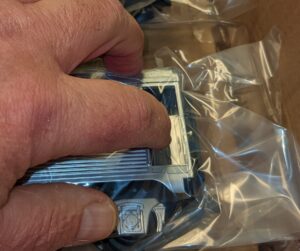
Then I discovered just by putting my finger in the right place that the vestibule and end doors open. They’re hinged and sprung, so they push back to the closed position when not under pressure.
Also in the box is a LionChief remote unit to operate the locomotive. It features the Santa Fe Chief logo and the road number of the engine. It requires three AAA batteries that the new engineer must supply.
There’s an oval of FasTrack that includes eight O-36 curves, two regular 10-inch straights, and two special 10-inch straights — one with a “Plug-Expand-Play” accessory jack, and the other with a receptacle for the power supply plug. A “wall wart” transformer that connects to it is included.
Let’s get rollin’
Lionel could have put O-31 curves in the set and the train would have run on them, but I’m glad it chose the broader radius. The track is easy to connect and offers the train room to “stretch its legs,” as opposed to “chasing its tail” on a circle or a smaller oval. It’s also a good size to put under or around the Christmas tree — so there’s more room for Santa to leave gifts.
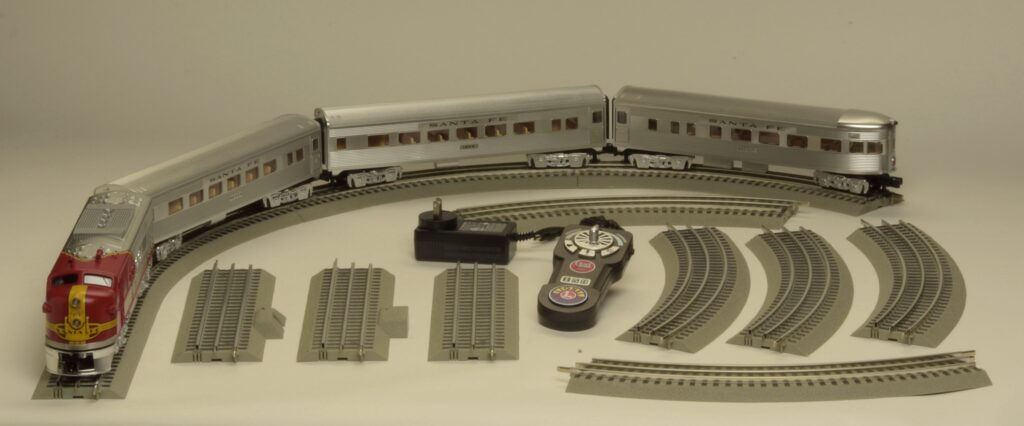
Ultimately the Lionel Super Chief LionChief fills an approximately 40-by-60-inch area. It’s an ideal starting point for a layout on a standard 4-by-8-foot sheet of plywood, with room for expansion and accessories.
Once the track is set up, power plugged in, and batteries added to the remote, getting the Super Chief out of the station is easy and intuitive with the supplied controller. It offers forward and reverse speed control and buttons for the horn, bell, and special announcements.
The other, more flexible option is to download the LionChief app onto an Apple or Android smartphone or tablet. You can establish a Bluetooth connection from the device to the locomotive and toggle all the above functions, plus have more control over the sounds, momentum, and other features. Additionally, you can use Lionel Voice Control.
Either way, it takes much longer to unpack the box and set up the track than it does to actually get a train running.
Applying power gets the train passenger cars to light up. The locomotive whistles until the remote is turned on or you connect with the app. When control is established, the diesel roars to life. With the clang of the bell and a toot of the horn, I was off!
Click here to watch the Super Chief run on the CT&T.
If you’re old school and prefer to run trains without sound, you can turn off the roar via the app or with a switch under the locomotive.
One thing I noticed was the lights in the cars shone steadily. To put it another way, there was little or no flickering as they passed over track joints. Excellent!
The train ran smoothly and sounded great. A package of extra traction tires for the engine is in the box.
Final thoughts on the Super Chief
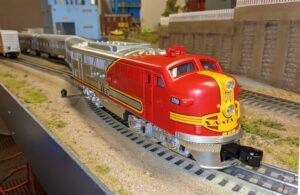
I chuckled a little when the announcement said, “Welcome aboard the Santa Fe Super Chief!” I think we’re going to need a few more cars, as they were generally much longer trains! Plus, the consist is more like Santa Fe’s all-coach El Capitan, which ran on a similar schedule between Chicago and Los Angeles as the Super Chief. Nonetheless, this engine and cars cut an attractive figure.
The Santa Fe Super Chief LionChief would be a set easily lending itself to production in many other road names. Maybe a Union Pacific City of Los Angeles? An Atlantic Coast Line Champion? Or a Western Pacific/Denver & Rio Grande Western/Chicago, Burlington & Quincy California Zephyr?
Anyone just starting out in the hobby, or even someone who just likes to run trains casually, will find a lot of play value in this set. Though Traditional size, the train is first-rate and the track and power are easy to set up and control. The outfit is great on its own; conversely, more track, cars, and accessories can be added to whatever level the user desires.
All aboard Lionel’s LionChief Super Chief! If you’re like me and haven’t bought a starter set in a while – or ever, for that matter – I’m pretty sure you’re going to like the ride.





